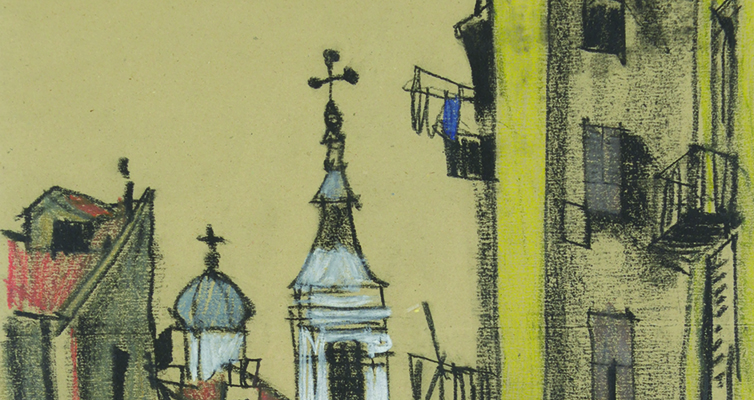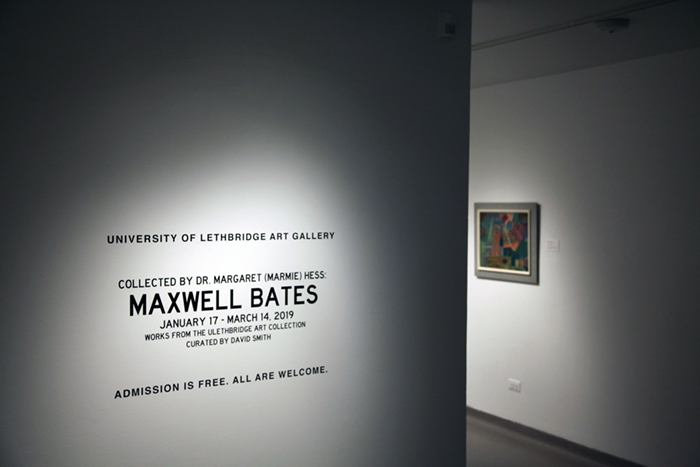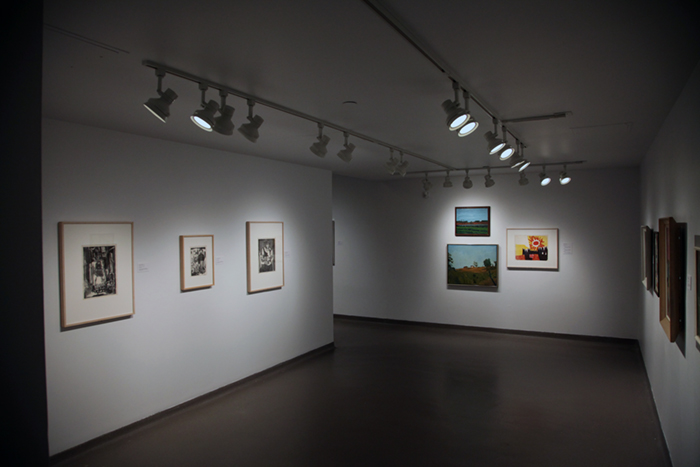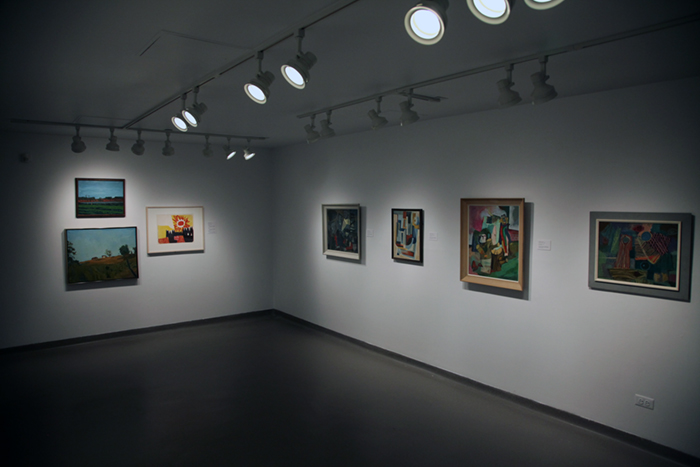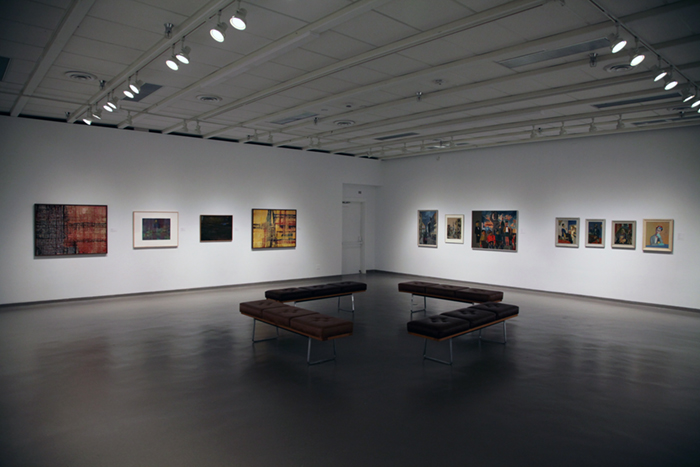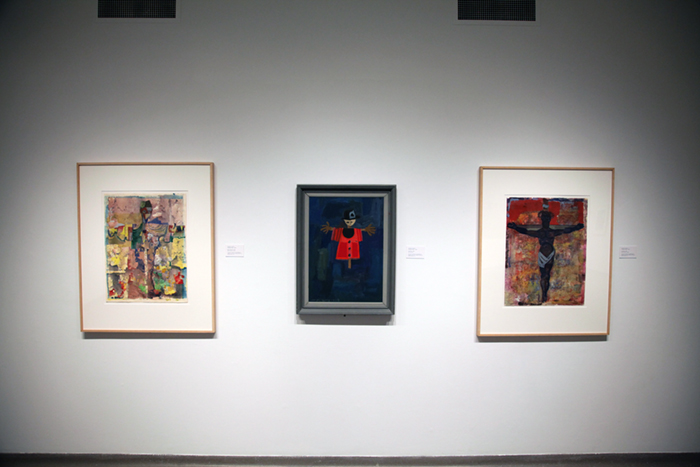Works from the uLethbridge collection
Curated by David Smith
Admission is free. All are welcome.
uLethbridge Art Gallery opens 2 new exhibitions: Collected by Dr. Margaret (Marmie) Hess: Maxwell Bates in the Hess Gallery and Embodied Landscapes, by artist Darlene St. Georges, in the Helen Christou Gallery.
Curatorial Statment
Maxwell Bates was a Canadian artist, architect and writer known for his painting and printmaking. Bates was a pioneer of the Expressionist movement in Canada which had begun in Europe in the early 20th century and involved using distorted reality to evoke emotion. Bates was born in Calgary, Alberta in 1906 and his early art education came from self-directed reading. As he studied, he became interested in socially engaged artists like Daumier and Millet (two important French artists of the mid-nineteenth century). His fascination with the complexities of the human condition carried throughout his practice all his life. In 1928, Bates showed an abstract painting titled Male and Female Forms, at the Calgary Arts Association exhibition. The work was not well received and he was expelled from the association and prohibited from exhibiting with them in the future. The following year Bates travelled to Chicago where he saw works by the Post-Impressionists such as Cézanne, Gauguin, Van Gogh, Seurat and others at the Chicago Art Institute. After feeling some encouragement from beyond Calgary when the National Gallery of Canada included Family with Pears (1929) in the Annual Exhibition of Canadian Art 1930-31, and some success showing work in New York, Bates left Canada for England in 1931 in an effort to learn more and broaden his horizons.
As Bates immersed himself in the international art world, he became successful in his own work as well. After catching the attention of some art critics during his first year in London, he was later invited to join the Twenties Group who were prominent Expressionists and Surrealists in their twenties. In 1934, he became an assistant to J.H. Gibbons, an architect working in the Gothic Revival and a specialist in ecclesiastical design. Employment gave him the ability to travel and the security to continue making work. Bates had a solo exhibition at the Wertheim Gallery and he was receiving commissions as well. In 1937, Bates was included in an antifascist exhibition where his works were shown alongside those of Picasso, Matisse and Kandinsky. In April 1939, Bates enlisted in the Territorial Army (British Army Volunteer Reserve) but was captured in France soon after and remained a prisoner of war until 1945. He wrote about the experience in a book called A Wilderness of Days (1978).
Bates returned to Calgary in 1946, the same year that Coste House began their exhibition program. Coste House played an important role in art education in the city by hosting international exhibitions and lectures and Bates attended many of the events. In 1954, he and A.W. Hodges were hired as co-architects and began working on St. Mary’s Cathedral in the city which was consecrated in 1957 and remains Bates’ most important architectural achievement. In the early 50s, Bates and fellow artist John Snow rescued a commercial lithographic press that was being disposed of and set it up in Snow’s basement. Snow and Bates both developed a reputation for their lyrical and figurative printmaking respectively. Bates continued making prints until he moved to Victoria in 1962 where he spent the rest of his life focused on painting until he passed away in 1980.
All but five of the works in this exhibition were collected by Dr. Margaret (Marmie) Perkins Hess and were gifted together with more than a thousand other artworks to the University of Lethbridge by her estate in 2017. Dr. Hess was an art historian and collector of Canadian and international art. The Hess gift significantly impacts the representation of Bates’ work in the UofL’s collection and makes this exhibition possible. The provenance records accompanying the Hess collection indicate that most were purchased from the artist and nearly half of all of them were bought on the advice of John Snow in 1961 in anticipation of his move to Victoria the following year. Interestingly, the first two pieces by Bates that Dr. Hess purchased in 1946 were Odalisque (1936) and Man with a Pipe (1937) on the advice of J.W.G. MacDonald, who was himself an important Canadian artist, and whose work she purchased for her collection as well. Dr. Hess finished her Bachelor of Arts degree at the University of Toronto in 1938 and later taught at the Banff School of Fine Arts (now the Banff Centre) and the Provincial Institute of Technology (now SAIT and ACAD). It was at the latter institution where she taught alongside MacDonald in 1946-47. As a longtime friend of the Bates family, Marmie Hess connected with Maxwell Bates at Coste House after he returned to Calgary in 1946. Dr. Hess loaned some of her Bates pieces for exhibitions and kept them in her possession until her passing in September of 2016, four months after her 100th birthday.
– David Smith, Preparator/Assistant Curator

